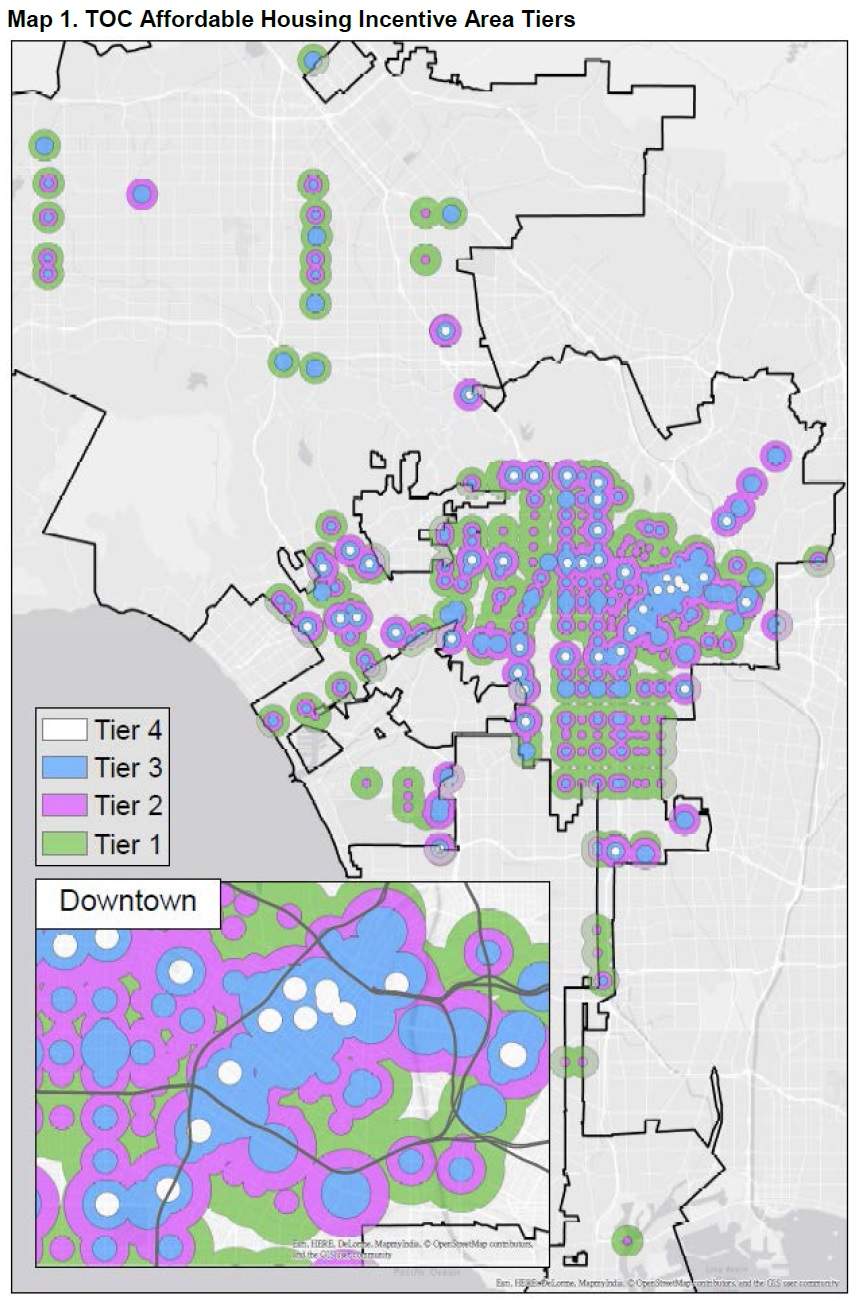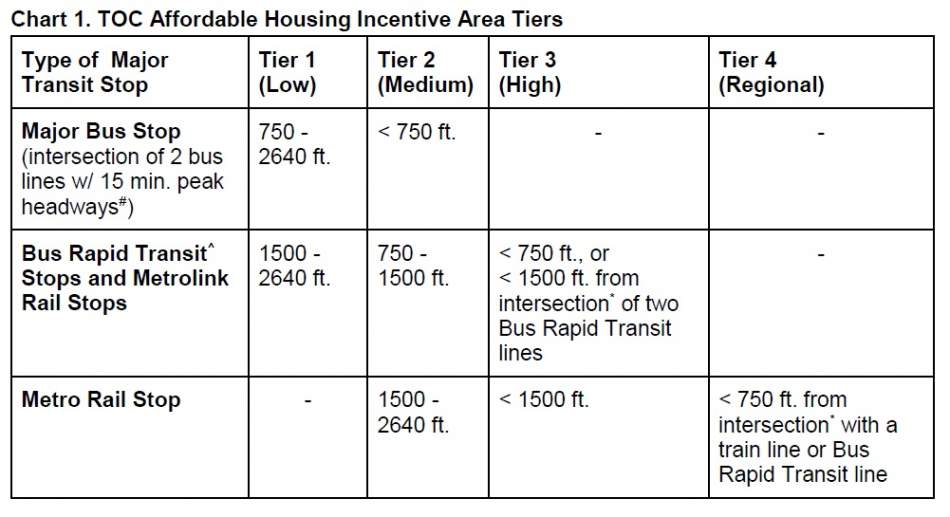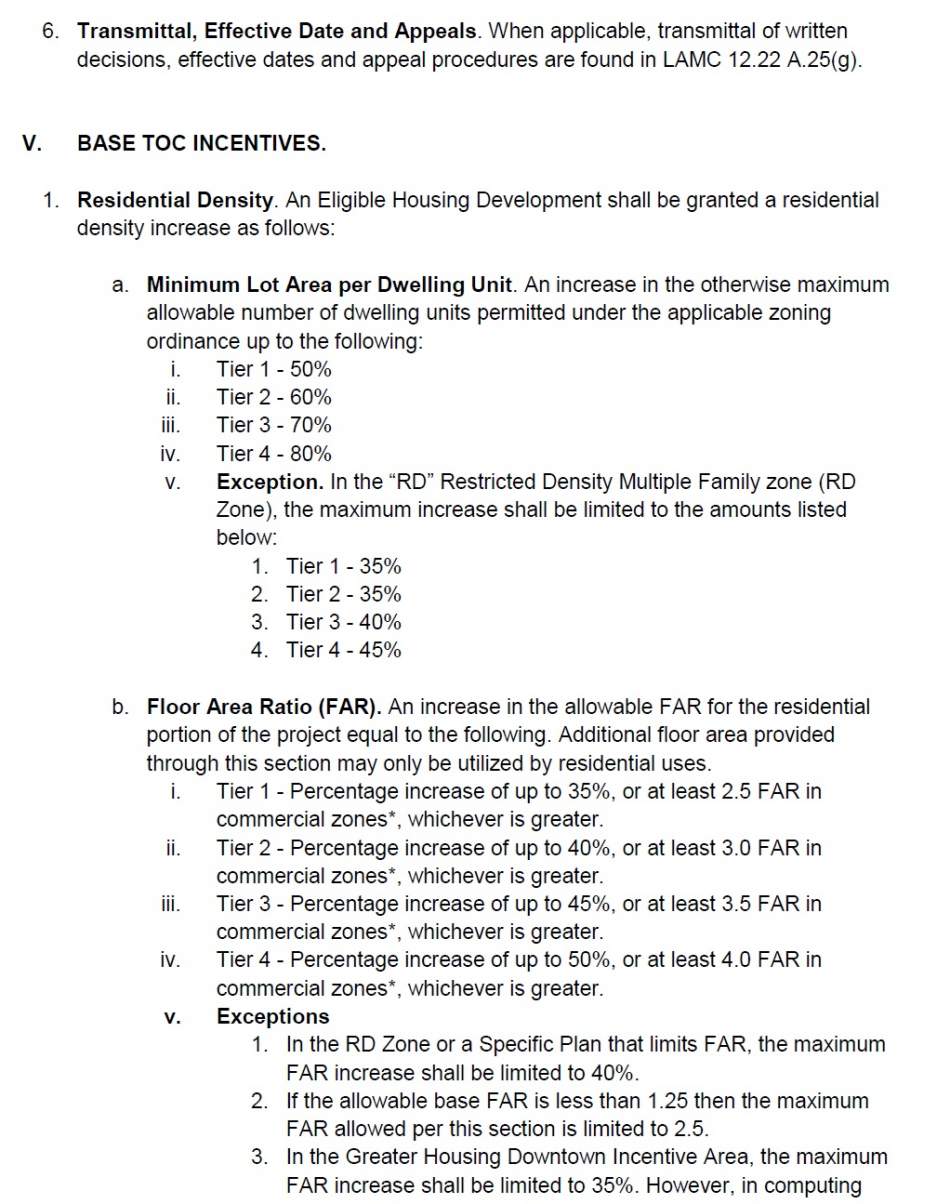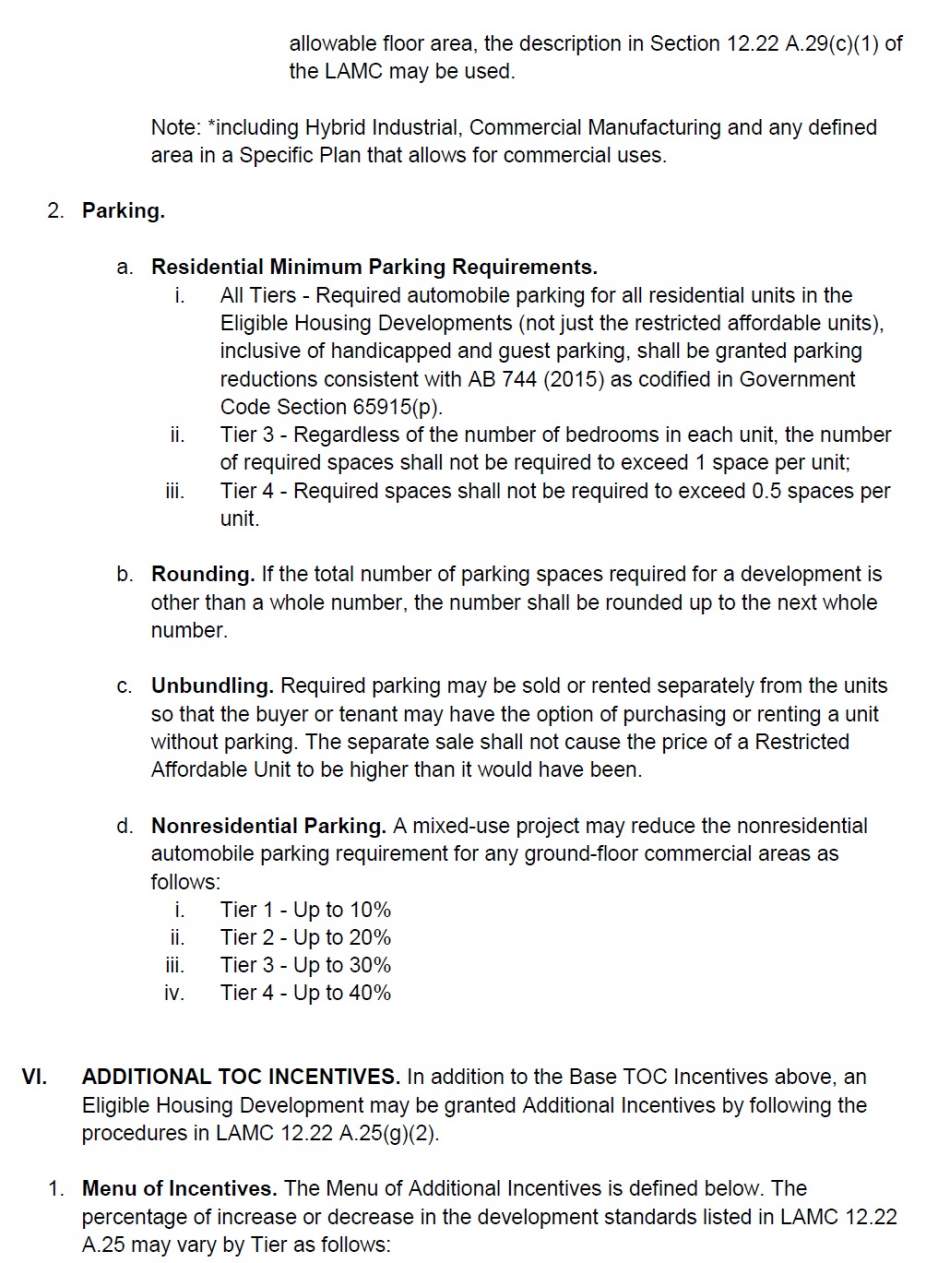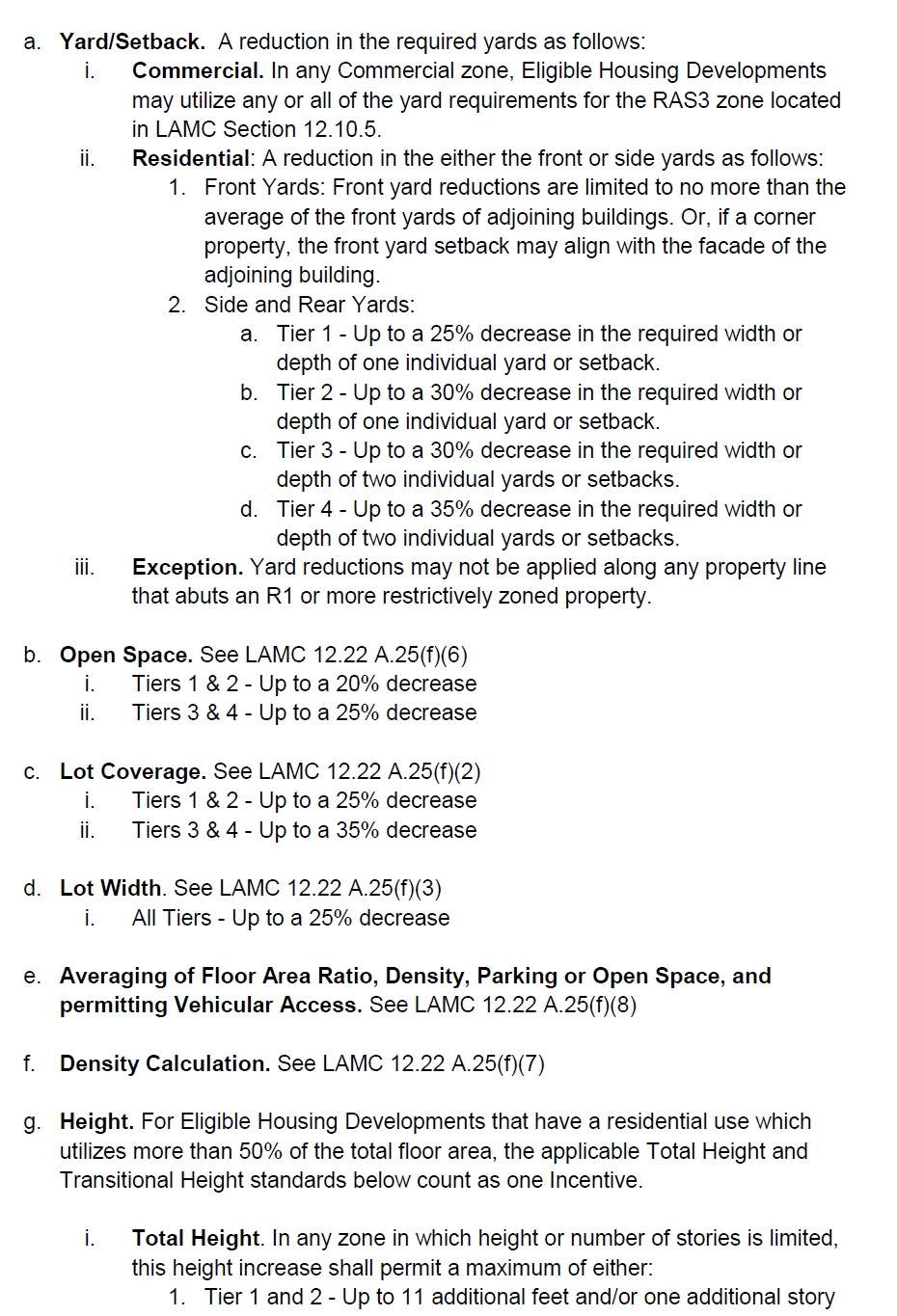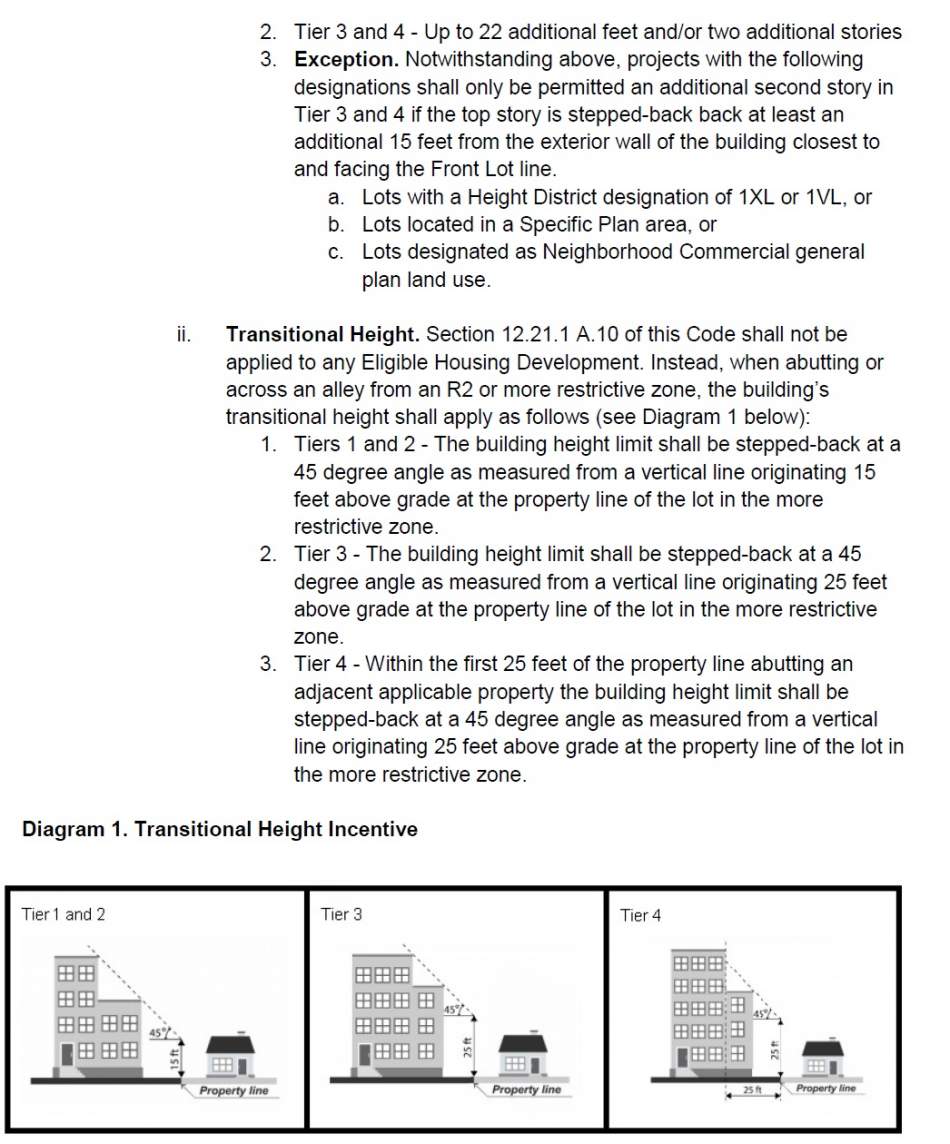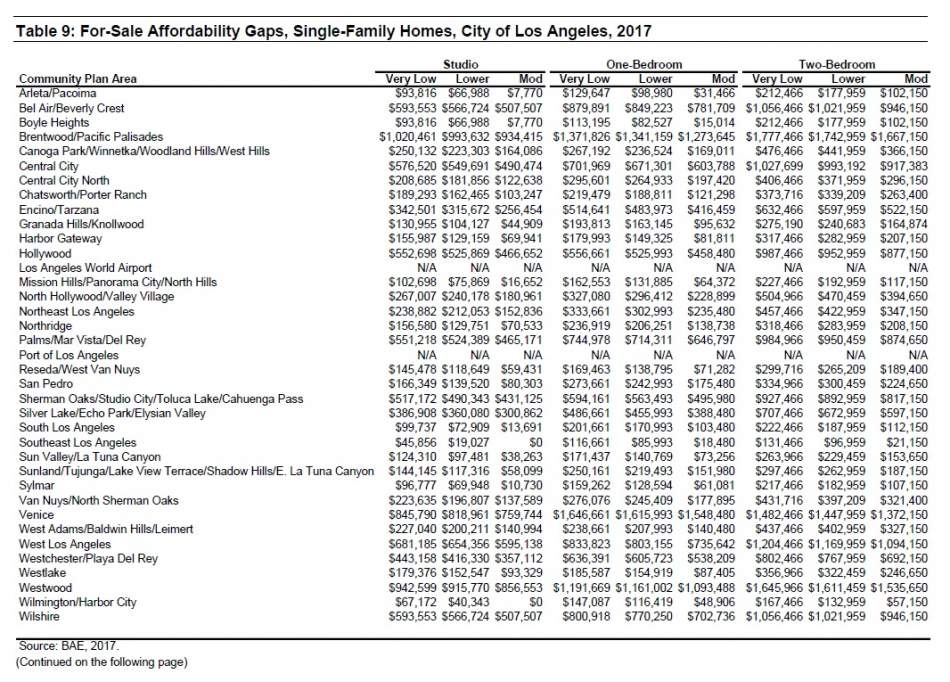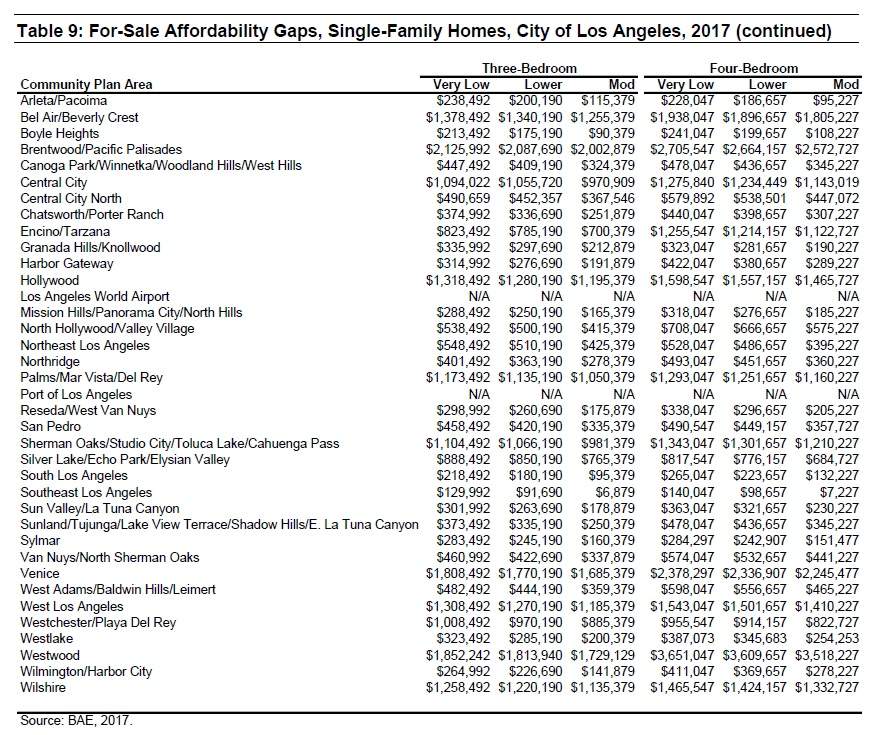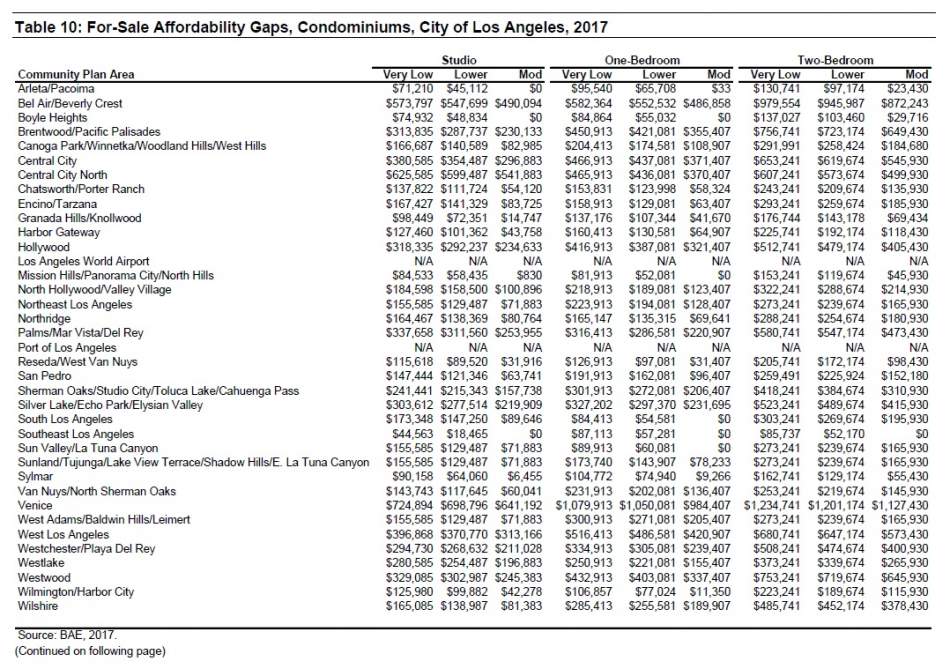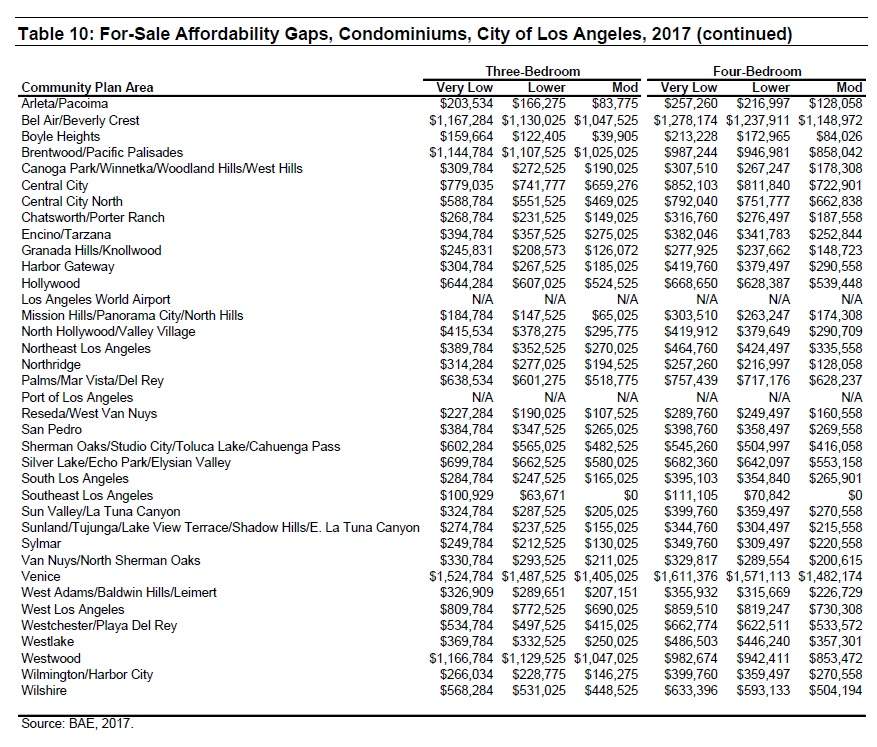Last November, while many Angelenos were left scratching their heads at the result of the Presidential election, affordable housing developers and organized labor had reason to celebrate. More than 63% of voters in the City of Los Angeles cast "yes" ballots for Measure JJJ, which requires any developer receiving a general plan amendment, zone change or other variance to 1) employ prevailing wage labor and 2) provide affordable housing through their projects or pay an in-lieu fee.
While the debate over Measure JJJ mostly focused on the merits of inclusionary zoning, another aspect of the initiative, the Transit Oriented Communities Affordable Housing Incentive Program, was overlooked. Simply put, the TOC Program functions much like California's Density Bonus Incentive Program, which grants exemptions from certain code restrictions in exchange for provide on-site affordable housing. However, the TOC Program is different in that it 1) applies only to transit-adjacent sites, 2) requires higher levels of on-site affordable housing and 3) provides more generous incentives.
A memo published yesterday by the Los Angeles Department of City Planning offers specifics on what the new program will entail:
TOC Affordable Housing Incentive Areas
TOC Affordable Housing Incentive areas are defined as the one-half mile radius surrounding Major Transit stops, which are marked on the map below.
These TOC Incentive areas are further divided according to the chart which follows.
Developers may pursue different TOC incentives within these areas depend on its tier, as well as the amount and type of on-site affordable housing units that are provided within the project. A 100% affordable development is permitted to increase one tier.
Eligibility
To qualify for TOC incentives, a development must meet all of the following criteria:
1. Construct five or more residential units, or add five or more residential units to an existing building.
2. The minimum number of on-site affordable unit percentages are to be calculated based on the total number of units in the completed project.
- Tier 1 - 8% of the total number of dwelling units at the Extremely Low Income (ELI) level, 11% at the Very Low Income (ELI) level or 20% at the Lower Income level.
- Tier 2 - 9% ELI, 13% VL, 23% Lower
- Tier 3 - 10% ELI, 14% VL or 25% Lower
- Tier 4 - 11% ELI, 15% VL or 27% Lower
3. Located within a one-half mile radius of a major transit stop.
4. Meets any applicable housing replacement requirements of California Government Code Section 65915(c)(3), with verification prior to the issuance of a building permit.
5. The project is not seeking or receiving incentives through the California density bonus program, or any local plan that provides similar incentives.
6. Projects meeting additional affordability requirements may be granted two or three additional incentives, and are eligible for extra fourth and fifth on-menu incentives should they meet the Measure JJJ prevailing wage labor requirements.
Incentives
Projects which meet the eligibility requirements may pick from the following incentives:
In-Lieu Fees
In a separate memo, the Planning Department has published a list of in-lieu fees for projects opting out of constructing on-site affordable units.
For projects requiring a general plan amendment, zone change or height district change resulting in an increase in density of more than 35 percent, the in-lieu fees would be as follows:
- $43,695 per studio unit
- $46,350 per one-bedroom unit
- $51,313 per two-bedroom unit
- $56,965 per three-bedroom unit
For projects requiring a general plan amendment, zone change or height distric tchance to allow residential construction where not previously allowed:
- $62,826 per studio unit
- $66,585 per one-bedroom unit
- $73,704 per two-bedroom unit
- $81,817 per three-bedroom unit
For for-sale developments, developers can meet the on-site affordable requirements by either providing:
- 11 units of very low income housing
- 20 percent of low income housing
- 40 percent of moderate income housing
The exact in-lieu fees will vary between community plan area, with the affordability gaps indicated below:
- What are Measure JJJ's Affordable Housing Requirements? (Urbanize LA)
- Proposed TOC Guidelines (LADCP)
- Draft Affordability Gaps Study (LADCP)





